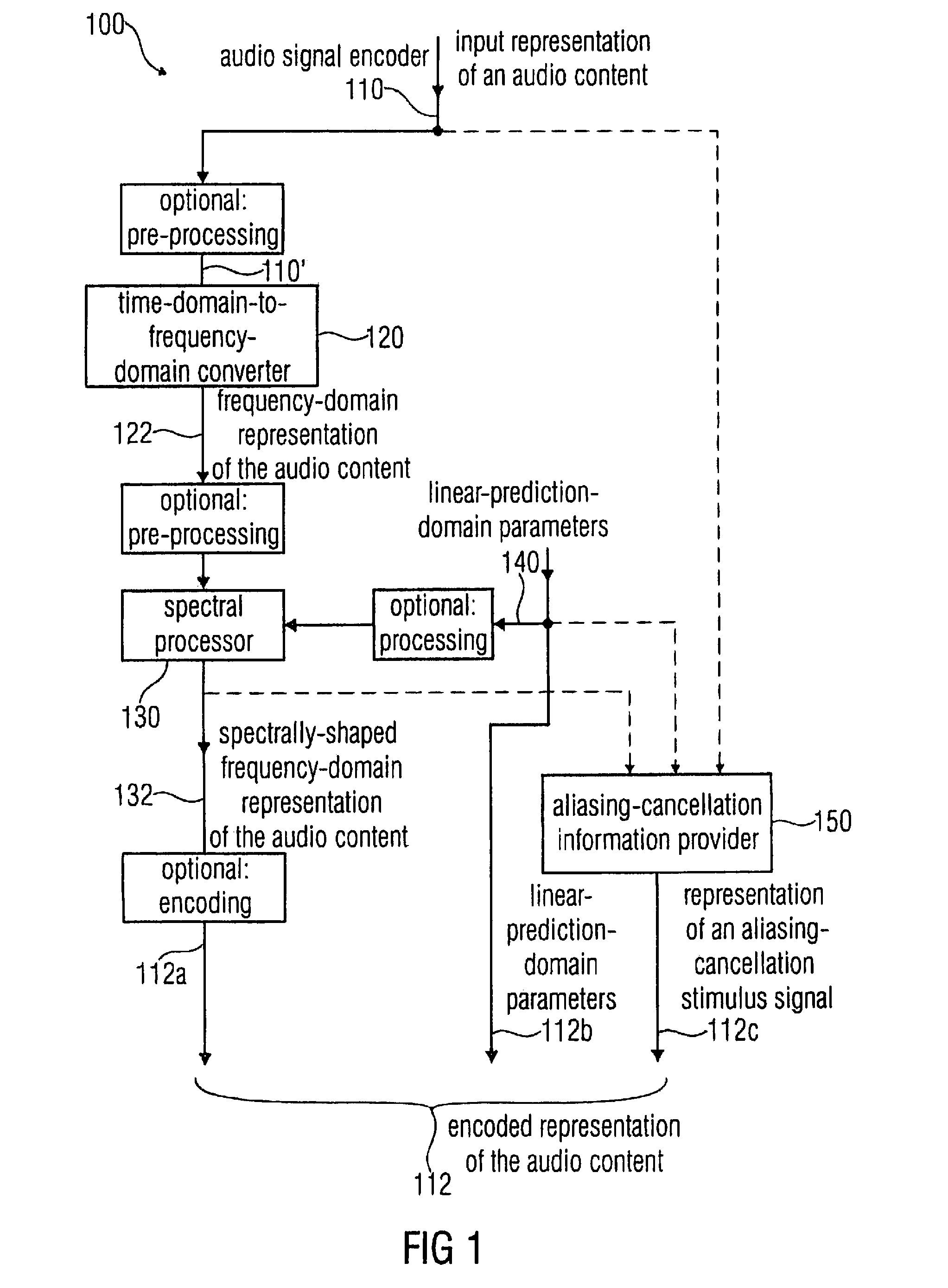Audio signal encoder, audio signal decoder, method for encoding or decoding an audio signal using an aliasing-cancellation
- Summary
- Abstract
- Description
- Claims
- Application Information
AI Technical Summary
Benefits of technology
Problems solved by technology
Method used
Image
Examples
Embodiment Construction
1. Audio Signal Decoder According to FIG. 1
[0062]FIG. 1 shows a block schematic diagram of an audio signal encoder 100, according to an embodiment of the invention. The audio signal encoder 100 is configured to receive an input representation 110 of an audio content and to provide, on the basis thereof, an encoded representation 112 of the audio content. The encoded representation 112 of the audio content comprises a first set 112a of spectral coefficients, a plurality of linear-prediction-domain parameters 112b and a representation 112c of an aliasing-cancellation stimulus signal.
[0063]The audio signal encoder 100 comprises a time-domain-to-frequency-domain converter 120 which is configured to process the input representation 110 of the audio content (or, equivalently, a pre-processed version 110′ thereof), to obtain a frequency-domain representation 122 of the audio content (which may take the form of a set of spectral coefficients).
[0064]The audio signal encoder 100 also comprise...
PUM
 Login to View More
Login to View More Abstract
Description
Claims
Application Information
 Login to View More
Login to View More - R&D
- Intellectual Property
- Life Sciences
- Materials
- Tech Scout
- Unparalleled Data Quality
- Higher Quality Content
- 60% Fewer Hallucinations
Browse by: Latest US Patents, China's latest patents, Technical Efficacy Thesaurus, Application Domain, Technology Topic, Popular Technical Reports.
© 2025 PatSnap. All rights reserved.Legal|Privacy policy|Modern Slavery Act Transparency Statement|Sitemap|About US| Contact US: help@patsnap.com



